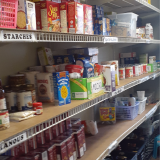Due to the government shutdown, we are temporarily closed. The government shutdown may not affect Smithsonian traveling exhibitions in your area. To learn about the status of a Museum on Main Street exhibition in your community, please check with your local cultural organization for individual operating status.
User account
Home / User account



